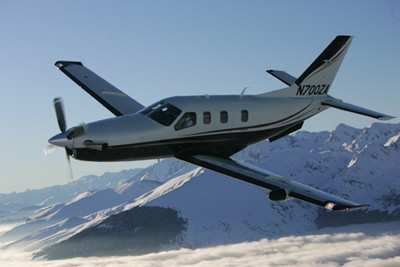Sets Of Runway Lights Off At New Bedford Airport
A six-seat, single-engine turboprop, a Socata TBM-700, went down
short of its intended runway while cleared for landing 1.5 miles
west of New Bedford, MA, airport (EWB) Friday night. The impact
killed three POB, PA lawyer, Peter J. Karoly; his wife, Dr.
Lauren Angstadt; and pilot, Michael Milot.

Some portion of the runway lighting was reported to be
inoperative at the time of the accident, and Karoly's brother
asserts that was a major factor in the accident. "The plane could
not find the runway on its heading because there were no lights,"
John Karoly said.
FAA spokesman Jim Peters said the additional lights, located in
the center of the runway and about 40 feet off both edges, have
been off since August because they were blocked by thick
vegetation. Pilots were notified about the situation in a
NOTAM.
Earlier this month, the city of New Bedford asked the FAA to
turn the lights back on, Peters said, and had obtained an emergency
permit from the local conservation commission to do so because the
runway is on protected wetlands. The lights remained off Friday
because the work clearing the vegetation hadn't been completed.
But Peters said the runway was safe and that lights that line
the edges of the runway, as well as lights that run down the
center, were on.
Peters said the lights that were off are intended as "an
additional aid."
"If you were to ask an expert pilot with an instrument rating
who knows these kinds of runways, he or she would tell you (that)
you can make an instrument landing without those lights," Peters
said.
The plane missed its first approach while trying to make an
instruments-only landing in the wet, foggy weather, and crashed on
the second approach at about 7:45 pm, according to Peters.
At the time of the crash, the temperature was 33 to 34 degrees
at the airport, and there was rain and fog. Cloud cover was at 200
feet and visibility was one mile, said NTSB investigator Robert J.
Gretz. The plane was traveling from Boston to New Bedford.
"At some point as the aircraft was on final approach, we lost
communication with it," Peters said.
 It also has not yet been determined
who was flying the plane. Although Karoly holds a private pilot
license with an instrument rating, he was with Milot, a
professional pilot. Both men were seated in the front of the
cockpit, according to accident investigators.
It also has not yet been determined
who was flying the plane. Although Karoly holds a private pilot
license with an instrument rating, he was with Milot, a
professional pilot. Both men were seated in the front of the
cockpit, according to accident investigators.
"He was very cautious. He always took a professional pilot with
him," said Karoly's brother.
Accordindg to Gretz, the plane hit the ground nose-first.
Because the wreckage was concentrated in such a small area, it
appeared the plane plunged almost straight down.
"It was consistent with a steep angle of descent," Gretz said. The
cockpit was partially separated in the wreckage, and both wings
were separated as well. Gretz added that it was too soon to say
what caused the crash, or if icing or any mechanical failures
played a role.
"We are in the very first stages of the investigation, just
documenting the scene and documenting the wreckage," he said.
Peters said "it could very well be" that NTSB investigators say
the lack of lights played a role in the crash. The wreckage
was taken yesterday to a hangar at the airport.
Initial information regarding the accident will be released in
six to nine days, and the entire review will take six months to a
year.
 Bolen Gives Congress a Rare Thumbs-Up
Bolen Gives Congress a Rare Thumbs-Up The SportPlane Resource Guide RETURNS!!!!
The SportPlane Resource Guide RETURNS!!!! Buying Sprees Continue: Textron eAviation Takes On Amazilia Aerospace
Buying Sprees Continue: Textron eAviation Takes On Amazilia Aerospace Hawker 4000 Bizjets Gain Nav System, Data Link STC
Hawker 4000 Bizjets Gain Nav System, Data Link STC Echodyne Gets BVLOS Waiver for AiRanger Aircraft
Echodyne Gets BVLOS Waiver for AiRanger Aircraft




